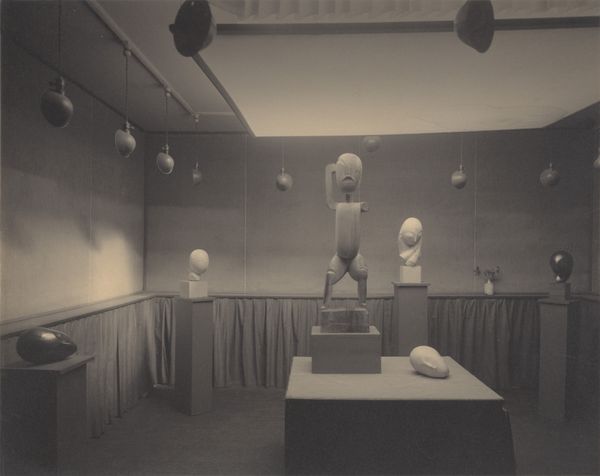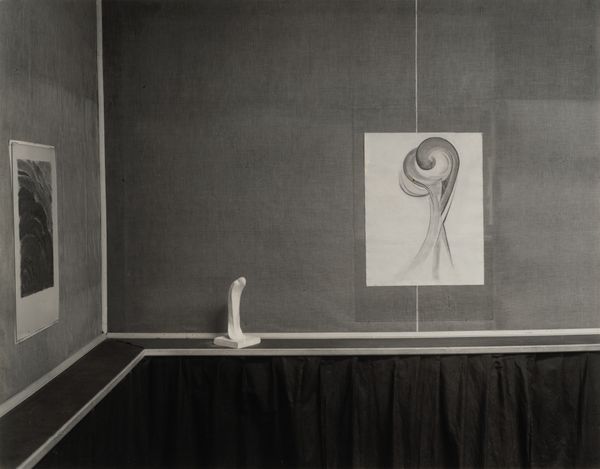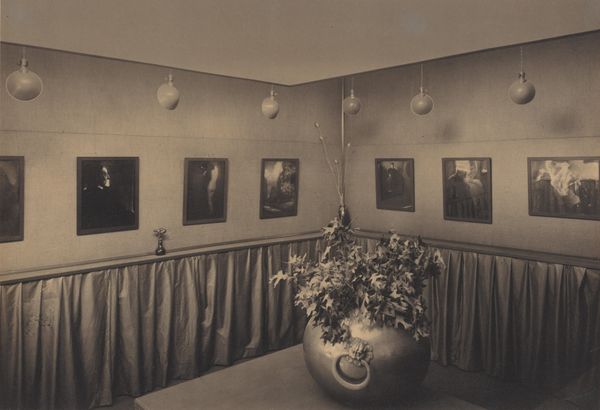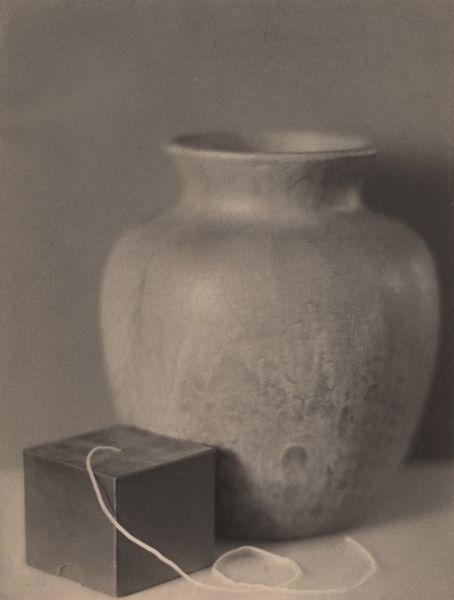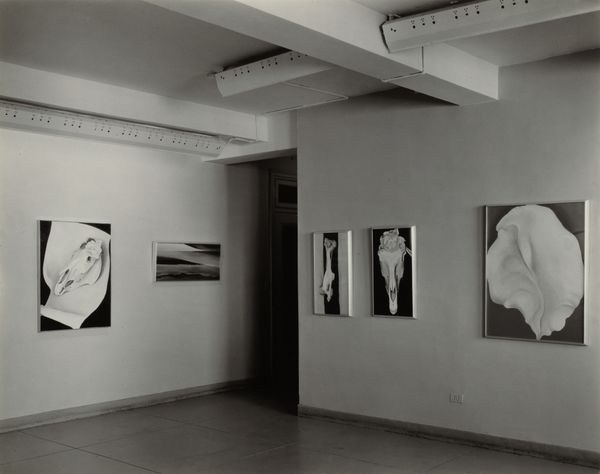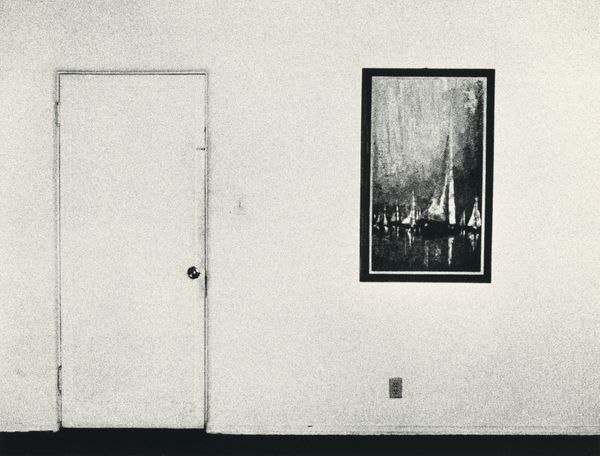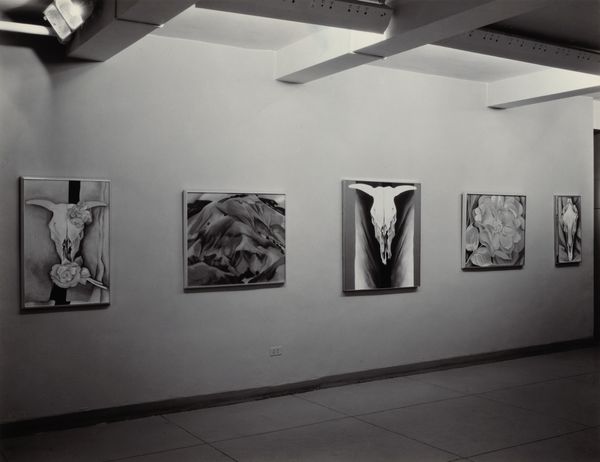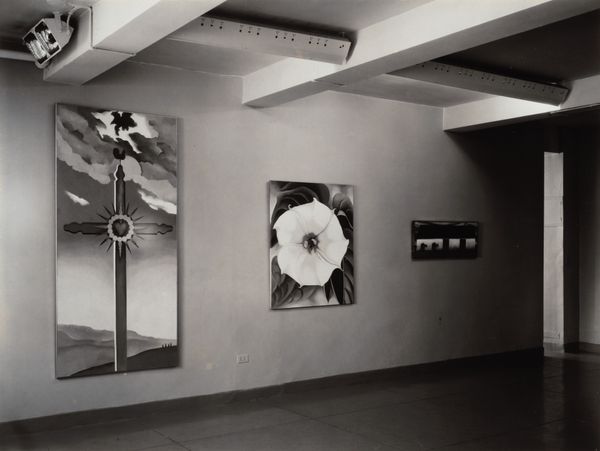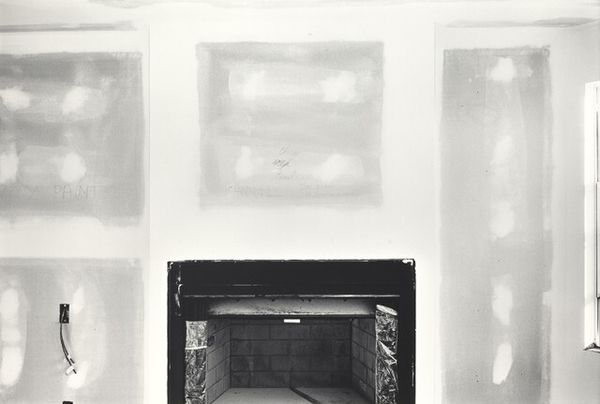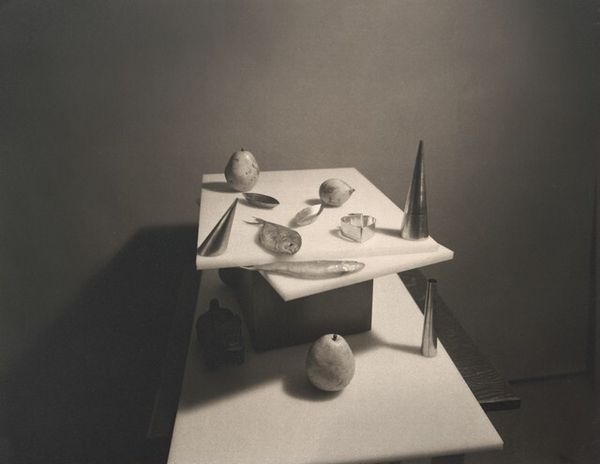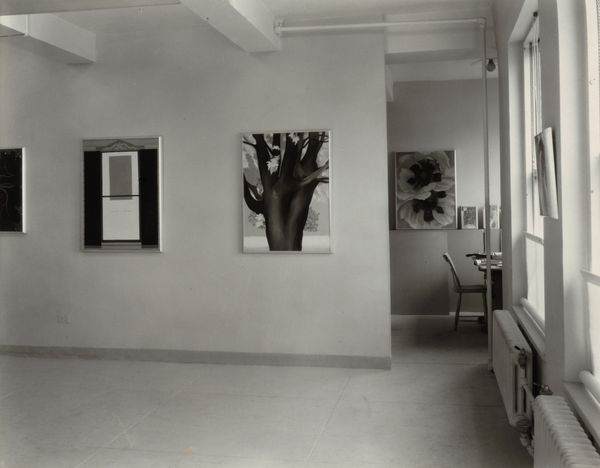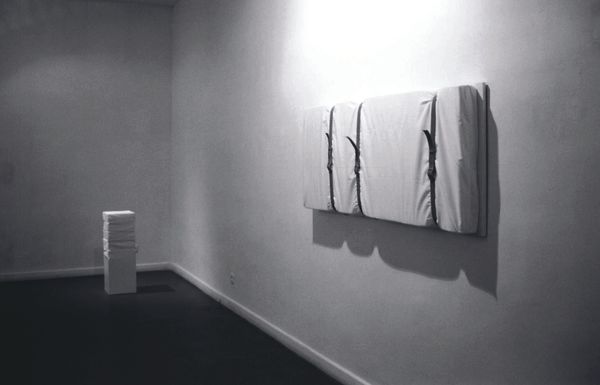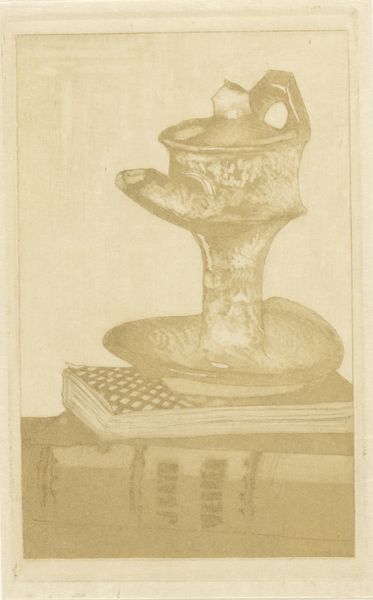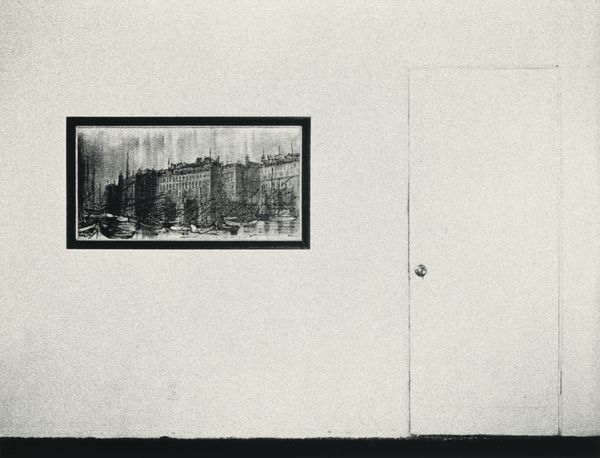
print, photography, gelatin-silver-print
#
cubism
# print
#
photography
#
gelatin-silver-print
Dimensions: image: 18.5 x 23.6 cm (7 5/16 x 9 5/16 in.) sheet: 20.1 x 25.3 cm (7 15/16 x 9 15/16 in.)
Copyright: National Gallery of Art: CC0 1.0
Curator: Alfred Stieglitz captured this gallery view titled "291—Picasso-Braque Exhibition" in 1915 using the gelatin-silver print process. Editor: The arrangement has such a stoic presence. I'm drawn to the somber grays, the careful arrangement of objects—a formal stillness almost reminiscent of a stage set. Curator: Precisely. It's an important document of Stieglitz's gallery "291," and more broadly, the introduction of European Modernism to American audiences. The photograph features an installation view, placing the works of Picasso and Braque alongside African sculpture. This juxtaposition asks a lot of the viewer, forcing a dialogue between different aesthetic traditions. Editor: Ah, the "primitive" art craze. That African mask—it’s almost confrontational with its symmetrical visage—it draws the eye instantly. Were these artifacts positioned to give added weight or perhaps offer historical precedence to cubism? Curator: Indeed. Stieglitz positioned these works in dialogue, nodding to the prevalent primitivism within modern art discourse while furthering the then-novel agenda of representing abstracted forms in artistic spaces. We should, however, consider this in relation to the colonial context that made this encounter possible. The presence of these cultural artifacts in "291" raises questions about appropriation and representation. Editor: I see what you mean. By photographing the installation, rather than the works themselves, did Stieglitz intend to focus on the symbolic weight of the show as a historical moment in time, of both great aesthetic collision and inevitable conflict? Curator: It is open to interpretation. Stieglitz does reveal a network of connections and disjunctions, inviting us to see the cross-cultural dynamics at play. Photography, in his practiced hands, became more than documentation: it’s an editorial statement. Editor: It does feel as if we are privy to the visual echoes and ripples left by such an early engagement of these artistic and cultural spheres. Curator: Absolutely, and the questions the artwork asks about identity and context continue to resonate powerfully today. Editor: It offers us a clear glimpse into how cultural icons can create not only artistic memory but societal awareness too.
Comments
No comments
Be the first to comment and join the conversation on the ultimate creative platform.
